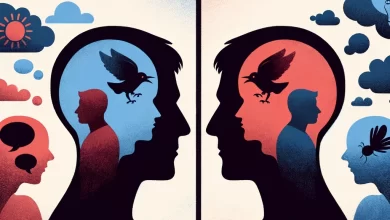Exploring the Dynamics of Love in Relationships

Love is a universal human pursuit, driving people to seek understanding, care, and connection with others. But have you ever wondered what truly shapes the dynamics of love? How does it influence our most cherished relationships, emotional bonds, and intimate connections?
In this article, we will delve into the intricacies of love dynamics and gain a deeper understanding of how it impacts our lives. From the essence of love in the human experience to the scientific perspective on love dynamics, we will explore the various facets of this complex emotion. Join us on this journey of discovery as we unravel the dynamics that shape our most profound connections.
Key Takeaways:
- Love is a fundamental aspect of the human experience, influencing our emotions, actions, and relationships.
- Love dynamics can be studied through both scientific and philosophical lenses, deepening our understanding of its complexities.
- The dynamics of love can be influenced by internal and external factors, including communication, family dynamics, and mental health.
- Understanding love dynamics as an energy system can help us navigate the challenges and complexities of relationships.
- Addressing challenges in love dynamics, such as conflict resolution and power imbalances, is vital for maintaining healthy connections.
The Essence of Love in Human Experience
Love is an integral part of the human experience, shaping our emotions, actions, and relationships. It is a profound force that can evoke a wide range of feelings, from profound ease and confidence to feelings of vulnerability and pain. Love has the power to forge deep emotional bonds and create meaningful connections that transcend boundaries and time.
At its core, love is a fundamental need that drives us to seek connection and intimacy. It encompasses more than just romantic relationships; love extends to friendships, family bonds, and the relationships we foster in our communities. It is through love that we find fulfillment, support, and a sense of belonging.
Emotional bonds formed through love not only bring joy and happiness, but also provide a sense of security and stability. Love allows us to share our lives with others, providing a foundation of trust, understanding, and acceptance.
The essence of love lies in the connections we form with others. It is through love that we experience a deep sense of connection and belonging, fostering a sense of purpose and meaning in our lives. Love fuels our innate desire for companionship and nurtures our souls, enriching our human experience in profound ways.
“Love is the bridge between you and everything.” – Rumi
The Power of Emotional Bonds
Emotional bonds are the fabric of love, allowing us to form deep connections with others. These bonds transcend words and actions, creating a profound understanding and intimacy between individuals. They are built on trust, respect, and vulnerability, enabling us to share our deepest fears, hopes, and dreams.
Through emotional bonds, we find solace in times of distress, support in moments of weakness, and celebration in times of joy. They provide a safe space for self-expression, allowing us to be our authentic selves without judgment or fear.
Emotional bonds foster empathy, compassion, and a genuine desire to see others thrive. They promote growth, resilience, and personal development, pushing us to become the best versions of ourselves.
The Universal Language of Connection
Love is a universal language that transcends borders, cultures, and languages. It is a force that unites us all, reminding us of our shared humanity and interconnectedness.
Through love, we bridge the gap between strangers, forging connections based on compassion, understanding, and kindness. Love inspires us to reach out to others, to offer a helping hand, and to lend an ear when someone needs to be heard.
Love encourages us to celebrate diversity and embrace the beauty of our differences. It compels us to treat others with respect and dignity, fostering harmonious relationships built on mutual understanding and inclusion.
The Journey of Love
The journey of love is a profound and transformative experience. It challenges us to grow, evolve, and adapt as individuals and as partners.
Love requires patience, compassion, and forgiveness. It demands that we confront our own fears and insecurities, and work towards healing and self-improvement.
We must learn to communicate effectively, to listen with intent, and to understand the needs and desires of our loved ones. Love prompts us to be present, to cherish the moments we have together, and to prioritize the well-being of our relationships.
By embracing the essence of love, we embark on a lifelong journey of discovery, growth, and connection. Love empowers us to navigate the complexities of human relationships and to cultivate deeper, more meaningful connections that enrich our lives and those around us.
| The Essence of Love in Human Experience | |
|---|---|
| Keywords | |
| love | human experience |
| emotional bonds | connection |
The Scientific Perspective on Love Dynamics
When it comes to understanding the dynamics of love, taking a scientific perspective can provide valuable insights into the underlying forces that shape our relationships and connections.
In scientific terms, love dynamics refer to the driving factors that influence and mold a relationship. These dynamics encompass a range of emotions and experiences, including desire, happiness, attraction, compatibility, and obligations.
Love dynamics are not static but evolve and change over time. They are influenced by both internal and external factors. Internal factors include our own individual mental health and well-being, while external factors can include communication patterns, family dynamics, and the presence of other relationships in our lives.
Studying love dynamics through a scientific lens allows us to gain a deeper understanding of how relationships develop, flourish, and sometimes falter. By exploring the scientific perspective on love, we can uncover fascinating insights into the intricacies of human connection.
Scientific research provides us with evidence-based knowledge on the foundations of healthy relationships and the factors that contribute to their success. It sheds light on the power of effective communication in fostering emotional intimacy, the importance of trust in building strong connections, and the significance of managing conflicts and navigating power dynamics.
Furthermore, scientific inquiry into love dynamics helps us recognize patterns and trends in relationships. It allows us to identify common challenges that couples may face, such as struggles with trust, unresolved conflicts, emotional incompatibility, or shifts in personality. Armed with this knowledge, we can proactively address these issues and work towards healthier, more fulfilling relationships.
By embracing the scientific perspective on love dynamics, we empower ourselves to navigate the complexities of relationships with greater understanding and intentionality. Through research and study, we can continue to unravel the mysteries of love and forge stronger, more meaningful connections.
“Science gives us a language to explore, measure, and understand the dynamics of love, enhancing our ability to create and sustain healthy relationships.” – Helen Fisher
Through the lens of science, we can unravel the intricacies of love dynamics and gain valuable insights into the foundations of healthy relationships.
Love Dynamics as an Energy System
When we delve into the dynamics of love, we can draw striking parallels to the field of physics, treating love as an energy system that fuels our relationships and influences their health. Just as a physical system’s total energy is determined by its kinetic and potential energy, the overall well-being of a relationship is shaped by various factors, forming an intricate interplay akin to the energy exchange in a closed system.
Consider a couple’s connection as a manifestation of potential energy, the positive aspects that contribute to their harmony and growth. These include emotional intimacy, shared values, trust, and mutual respect. Such elements elevate the overall energy level of the relationship, fostering closeness and resilience.
However, a relationship’s dynamics are not without challenges. These hurdles can be likened to kinetic energy, the energy associated with movement, change, and conflict. Examples include miscommunication, differences in expectations, unresolved issues, and external stressors. These challenges introduce movement and require effort to address, potentially diminishing the overall energy within the relationship.
To navigate love dynamics as an energy system, couples can adopt strategies to bolster the positive aspects and address the challenges. Open and honest communication serves as a catalyst to strengthen the potential energy of love. This involves active listening, expressing emotions, and practicing empathy.
Additionally, couples must acknowledge and address the kinetic energy of their relationship. Recognizing the challenges they face and finding constructive ways to resolve conflicts can help maintain balance and prevent energy depletion. Seeking professional guidance through couples therapy or counseling can be invaluable in understanding and managing the kinetic energy within the relationship.
“In love dynamics, understanding the energy system at play allows us to nourish the positive aspects and effectively address the challenges, cultivating a healthy and sustainable connection.”
Through the lens of an energy system, we gain valuable insights into the intricate dynamics of love in relationships. By recognizing the interplay between potential and kinetic energy, couples can actively work towards maintaining and enhancing the total energy within their connection, fostering a lasting and fulfilling love.
Love Dynamics Energy System Table:
| Aspect | Potential Energy (Positive Aspects) | Kinetic Energy (Challenges) |
|---|---|---|
| Emotional Intimacy | Deep emotional connection and vulnerability | Conflict resolution and navigating emotional differences |
| Shared Values | Common goals, beliefs, and interests | Managing differences and compromising |
| Mutual Respect | Appreciation and admiration for each other | Resolving power imbalances and establishing boundaries |
| Trust | Reliance and confidence in each other | Rebuilding trust after breaches or betrayals |
Understanding the balance between potential and kinetic energy in love dynamics equips couples with the knowledge to nurture their relationship health effectively. By focusing on fostering the positive aspects and managing the challenges, couples can cultivate a vibrant and sustainable love rooted in emotional connection and resilience.
Love Dynamics in the Face of Challenges
Love dynamics are often put to the test when faced with challenges and conflicts. These hurdles have the potential to significantly impact the dynamics of love in relationships. Conflict resolution, power imbalances, emotional intimacy, and various other factors all come into play.
Dealing with these challenges head-on is crucial for maintaining healthy and fulfilling connections with our loved ones. By acknowledging the unique dynamics of love and actively addressing the obstacles that arise, we can navigate these challenges and emerge even stronger as a couple.
Conflict resolution is an essential skill for any relationship. When disagreements or disputes arise, each partner must find ways to communicate effectively and find common ground. This process requires empathy, active listening, and a willingness to compromise. By working together to resolve conflicts, couples can strengthen their love dynamics and build a more harmonious partnership.
“Conflict is an opportunity for growth and understanding. It allows both partners to express their needs and desires, leading to a deeper understanding of one another’s perspectives.”
Power dynamics also play a significant role in relationships. The distribution of power can influence decision-making, influence, and overall dynamics within the partnership. It is crucial to create a balance of power where both partners feel valued and heard. Communicating openly about individual needs, expectations, and boundaries is key to maintaining a healthy power dynamic.
Emotional intimacy is another vital aspect of love dynamics. It involves the ability to share vulnerabilities, communicate openly, and connect on a deep emotional level. Building emotional intimacy requires trust, empathy, and active engagement with one another’s emotions. Nurturing emotional intimacy can help couples navigate challenges together and foster a stronger bond.
Addressing challenges in love dynamics requires a commitment to growth and a willingness to adapt. It is essential to communicate openly, respect each other’s boundaries, and seek professional help when necessary. By actively addressing challenges and working towards resolution, couples can cultivate a love dynamic that is resilient, healthy, and fulfilling.
Expert Advice: Prioritizing Conflict Resolution
According to renowned relationship expert Dr. John Gottman, conflict resolution is a vital skill for maintaining healthy love dynamics. He emphasizes the importance of addressing conflicts sooner rather than later and encourages couples to adopt a positive approach to problem-solving. By actively working towards resolving conflicts and fostering open communication, couples can navigate challenges and strengthen their love dynamics.
Unraveling Relationship Dynamics
Relationship dynamics play a crucial role in shaping the quality and health of our connections with others. These dynamics encompass a broad range of patterns and interactions that occur in various types of relationships. Understanding and navigating relationship dynamics is essential for building and nurturing fulfilling connections.
Effective communication is one of the key pillars of maintaining healthy relationship dynamics. It involves actively listening to one another, expressing thoughts and emotions openly, and being receptive to feedback. Good communication allows partners to better understand each other’s needs, desires, and concerns, promoting a deeper sense of connection and intimacy.
Trust is the foundation upon which strong relationship dynamics are built. Trust involves having confidence in one another’s actions, words, and intentions. When trust is present, individuals feel secure, valued, and respected within the relationship. Trust allows partners to be vulnerable, fostering emotional intimacy and deepening the bond between them.
Setting and respecting boundaries is another critical aspect of relationship dynamics. Boundaries define what is acceptable and what is not within a relationship. Each individual has their own needs, values, and personal space that should be acknowledged and honored. By establishing clear boundaries and respecting them, partners create a safe and healthy environment where both parties feel comfortable and respected.
Conflict resolution is an inevitable part of any relationship. How conflicts are resolved can significantly impact the dynamics of a relationship. Healthy conflict resolution involves active listening, empathy, compromise, and finding mutually beneficial solutions. Resolving conflicts in a constructive and respectful manner strengthens the relationship, fosters understanding, and builds trust.
Emotional intimacy is a vital component of relationship dynamics. It involves sharing emotions, vulnerabilities, and deeper thoughts with one another. Emotional intimacy cultivates a strong connection between partners, promoting trust, empathy, and support. Nurturing emotional intimacy requires open communication, active listening, and being present for one another.
Understanding and navigating relationship dynamics requires continual effort and growth from both partners. By prioritizing effective communication, trust, setting and respecting boundaries, conflict resolution, and emotional intimacy, individuals can build strong and fulfilling connections with their loved ones.
Elements of Healthy Relationship Dynamics
| Key elements | Description |
|---|---|
| Effective Communication | Open and honest communication that fosters understanding and connection. |
| Trust | Confidence in one another’s actions, words, and intentions. |
| Boundaries | Respecting individual needs, values, and personal space. |
| Conflict Resolution | Resolving conflicts constructively and mutually beneficially. |
| Emotional Intimacy | Sharing emotions, vulnerabilities, and deeper thoughts with one another. |
The Ideal Dynamic of a Relationship
In a healthy and fulfilling relationship, the ideal dynamic is built on a foundation of mutual respect, open communication, trust, and emotional connection. These essential elements create a strong bond between partners, fostering happiness and satisfaction in the relationship.
Mutual respect forms the basis of a healthy dynamic. It involves acknowledging each other’s individuality, opinions, and boundaries. When both partners treat each other with respect, it creates a positive and supportive environment.
Open communication is another key aspect of the ideal dynamic. It allows partners to express their thoughts, feelings, and needs openly and honestly. Through effective communication, they can understand each other better, resolve conflicts, and strengthen their emotional connection.
“Open communication is the key to a successful relationship. It builds trust, understanding, and emotional intimacy.”
Trust is an integral component of the ideal dynamic. Trusting each other means having confidence in your partner’s integrity, honesty, and intentions. It creates a sense of security and enables partners to rely on each other during both good times and challenging times.
An emotional connection is the deep bond that partners share. It involves understanding, empathy, and support for each other’s emotions and well-being. This connection allows partners to feel understood, loved, and valued, enhancing their overall satisfaction in the relationship.
It’s important to note that the ideal dynamic of a relationship is not a fixed concept and may evolve or adapt over time to accommodate the changing needs and circumstances of the partners. By nurturing these core elements of mutual respect, open communication, trust, and emotional connection, couples can cultivate a strong, healthy, and fulfilling relationship.
For more insights on fostering a healthy relationship dynamic, check out this informative resource on healthy relationship dynamics.
Basics of Relationship Dynamics
Relationship dynamics encompass the intricate interplay of emotions, behaviors, and communication patterns that govern how individuals relate to one another. Understanding the basics of relationship dynamics is crucial for maintaining healthy and rewarding relationships.
Trust forms the bedrock of any strong relationship. It is the firm belief in the reliability, honesty, and integrity of your partner. Trust is built over time through consistent actions and open communication. When trust is present, it fosters a sense of security and emotional connection.
Effective communication is another fundamental aspect of relationship dynamics. It involves actively listening, expressing yourself honestly and respectfully, and understanding your partner’s perspective. Good communication enables couples to navigate challenges, express love and affection, and resolve conflicts constructively.
Power dynamics in relationships refer to the distribution of influence, control, and decision-making. It is important for partners to recognize and address any imbalances in power to ensure mutual respect and fairness. Open dialogue and compromise are essential for maintaining healthy power dynamics.
Emotions play a significant role in relationship dynamics. Being aware of your own emotions and validating your partner’s emotions fosters a deeper emotional connection. Emotional intelligence allows couples to navigate difficult situations with empathy, understanding, and compassion.
Boundaries are essential in maintaining healthy relationship dynamics. Boundaries define the limits and expectations of what is acceptable or unacceptable in a relationship. Setting and respecting boundaries promotes individual autonomy, privacy, and emotional well-being.
The Role of Boundaries in Relationship Dynamics:
| Benefits of Boundaries | Examples |
|---|---|
| Facilitate open communication | Discussing personal needs and desires |
| Promote mutual respect | Recognizing and honoring personal space |
| Protect emotional well-being | Avoiding toxic behaviors |
| Encourage personal growth | Supporting individual interests and goals |
Understanding the basics of relationship dynamics empowers couples to build a strong foundation for their relationship. By cultivating trust, effective communication, awareness of power dynamics, emotional intelligence, and healthy boundaries, couples can nurture a fulfilling and harmonious connection.
Common Challenges in Relationship Dynamics
Relationships are a complex and ever-evolving dance between two individuals, shaped by their unique dynamics. However, these dynamics can sometimes face challenges that impact the overall health and quality of the connection. It is important to recognize and address these challenges in order to foster a healthy and balanced relationship.
Trust Issues
Trust is the cornerstone of any strong relationship. However, trust issues can arise due to past experiences, insecurities, or breaches of trust. These issues can create a sense of uncertainty and hinder the ability to fully connect with your partner. Building trust takes time and effort, but it can be achieved through open communication, honesty, and consistent actions that demonstrate reliability and commitment.
Unresolved Conflict
Conflict is a natural part of any relationship, but when conflicts go unresolved, they can lead to resentment and a breakdown in communication. It is important to address conflicts in a healthy and constructive manner, focusing on understanding each other’s perspectives and finding mutually beneficial solutions. Seeking professional help, such as couples therapy, can be beneficial in navigating challenging conflicts and fostering lasting resolutions.
Emotional Incompatibility
Emotional compatibility plays a vital role in the success of a relationship. When partners have different emotional needs, communication styles, or ways of expressing affection, it can create a sense of disconnect. It is important to have open conversations about emotional needs and find ways to meet each other’s needs while respecting individual differences. Developing emotional intelligence and empathy can help bridge the gap in emotional compatibility.
Personality Changes
Individuals go through personal growth and changes over time, and these changes can impact relationship dynamics. Personality changes, such as shifts in values, interests, or priorities, can create tension and challenges within the relationship. It is crucial to have open and honest communication about these changes, allowing space for individual growth while finding ways to maintain a strong connection based on shared goals and values.
Addressing these common challenges in relationship dynamics requires ongoing commitment, understanding, and effort from both partners. By recognizing these challenges and actively working towards solutions, couples can navigate these hurdles and build a stronger, healthier, and more fulfilling connection.
Power Dynamics in Relationships
In any relationship, power dynamics play a crucial role in shaping the roles and behaviors of individuals involved. It is important to understand that power dynamics can manifest in various ways and may not always involve dominance and submission. Instead, they refer to the influence individuals have over each other in specific situations or challenges.
When we examine power dynamics in relationships, we consider the imbalance of influence and control. This imbalance can arise from different factors such as social norms, cultural expectations, personal traits, and even external circumstances. Recognizing and understanding these power dynamics is essential for creating a more balanced, emotionally secure, and nurturing relationship.
Power dynamics have the potential to impact the overall health and well-being of a relationship. It is crucial to address and manage these dynamics effectively to ensure both partners feel valued, respected, and heard.
Common Power Dynamics in Relationships
There are several common power dynamics that can influence relationships. These dynamics can shape the way partners communicate, make decisions, and navigate conflicts. By identifying and understanding these dynamics, couples can work towards a more equitable and harmonious partnership. Here are some examples:
- Imbalance in Decision-Making: One partner may have more influence over decision-making processes, leading to a lack of equality.
- Emotional Dominance: One partner may have more authority when it comes to expressing emotions or influencing the emotional atmosphere within the relationship.
- Financial Control: One partner may have more control over financial matters, which can create a power imbalance that affects other aspects of the relationship.
- Social Dynamics: Power imbalances can also manifest in social situations, where one partner may have more influence or control over social interactions and activities.
Resolving Power Imbalances in Relationships
Addressing power imbalances is crucial for creating a healthier, more equitable relationship dynamic. Here are some strategies that can help:
- Open Communication: Encourage open and honest communication to ensure both partners have a platform to express their needs, desires, and concerns.
- Empathy and Understanding: Foster empathy and understanding by actively listening to each other’s perspectives and experiences.
- Shared Decision-Making: Strive for shared decision-making, where both partners have an equal say in choices that impact the relationship.
- Mutual Respect: Cultivate mutual respect for each other’s thoughts, opinions, and boundaries.
- Collaborative Problem-Solving: Work together to find solutions and resolve conflicts in a way that takes both partners’ needs and desires into account.
By actively addressing power dynamics in relationships, couples can create a more balanced, healthy, and fulfilling partnership.
Changing Relationship Dynamics for Balance
In any relationship, it is natural for dynamics to change and evolve over time. Achieving a balanced relationship dynamic involves several key elements that contribute to the overall health and happiness of the partnership. By prioritizing trust, effective communication, compromise, and respecting boundaries, couples can work towards creating a more harmonious and fulfilling dynamic in their relationship.
Trust is the foundation of a strong and balanced relationship dynamic. Trusting each other allows partners to feel secure, rely on each other, and build a solid emotional connection. When there is trust, individuals can be vulnerable and open, fostering intimacy and understanding.
Effective communication plays a crucial role in maintaining a balanced relationship dynamic. By openly expressing thoughts, feelings, and needs, couples can avoid misunderstandings, resolve conflicts, and strengthen their connection. Regular and meaningful communication enables partners to stay on the same page and work together towards shared goals.
“Communication is the lifeline of a relationship. It helps us understand and support each other, fostering a deeper connection and emotional bond.”
Compromise is another essential aspect of maintaining a balanced relationship dynamic. It involves finding middle ground and making mutually beneficial decisions. By seeking solutions that meet the needs of both partners, individuals demonstrate their commitment to the relationship and create an atmosphere of fairness and harmony.
Respecting boundaries is vital for establishing and maintaining healthy relationship dynamics. Each individual has their own needs, desires, and limits. Respecting these boundaries shows a commitment to honoring and valuing each other’s autonomy and personal space. Understanding and respecting boundaries also promotes trust and emotional safety within the relationship.
To cultivate a more balanced relationship dynamic, it is important to support each other’s individual interests. Encouraging personal growth and pursuing individual passions not only enhances personal fulfillment but also brings new experiences and perspectives into the relationship. Supporting each other’s interests fosters a sense of independence and creates a dynamic where both partners feel valued and respected.
It is crucial to approach conflicts and disagreements with fairness and understanding. Arguing fairly means listening to each other’s perspectives, avoiding personal attacks, and working towards finding a resolution that benefits both parties. Fair and constructive conflict resolution helps maintain a balanced dynamic and prevents resentment from building up.
Ultimately, creating a balanced relationship dynamic requires ongoing effort and commitment from both partners. By prioritizing trust, effective communication, compromise, and respecting boundaries, couples can navigate the changing dynamics of their relationship with grace and create a stronger and more fulfilling connection.
Elements of a Balanced Relationship Dynamic
| Elements | Description |
|---|---|
| Trust | A foundation of security, vulnerability, and emotional connection. |
| Effective communication | Openly expressing thoughts, feelings, and needs to avoid misunderstandings and strengthen the connection. |
| Compromise | Finding middle ground and making mutually beneficial decisions. |
| Respecting boundaries | Valuing autonomy, personal space, and individual needs. |
| Supporting individual interests | Encouraging personal growth and pursuing passions outside of the relationship. |
| Fair conflict resolution | Approaching conflicts with fairness, understanding, and a desire for resolution. |
By focusing on these elements, couples can foster a more balanced and fulfilling relationship dynamic that promotes happiness, growth, and long-term satisfaction.
Research shows that healthy relationship dynamics contribute to overall well-being and life satisfaction. Investing time and effort into understanding and improving the dynamics of your relationship can have long-lasting positive effects on your happiness and the quality of your connection with your partner.
Conclusion
The dynamics of love in relationships are complex and ever-evolving. Understanding and navigating these dynamics is crucial for building and maintaining healthy and fulfilling connections with our loved ones. By recognizing the fundamental principles, challenges, and ideal dynamics of relationships, we can cultivate stronger and more rewarding relationships in our lives.
Love dynamics play a significant role in shaping the course of our relationships. From the essence of love in our human experience to the scientific perspective on relationship dynamics, we uncover the intricate interplay of emotions, communication, and trust that form the foundation of healthy relationships.
As we explore the challenges in relationship dynamics, it becomes evident that conflict resolution, power imbalances, and emotional intimacy are crucial aspects to consider in maintaining a healthy connection. Alongside this, recognizing and embracing the changing dynamics for balance – through effective communication, compromise, and respecting boundaries – allows couples to foster a more fulfilling and equal partnership.
In conclusion, healthy relationships are built on understanding and navigating the dynamics of love. By acknowledging the complexities, challenges, and ideal dynamics, we can establish stronger emotional bonds, foster deeper connections, and create a love that withstands the test of time. So, let us embark on this journey of love together and cultivate relationships that bring joy, fulfillment, and growth.







